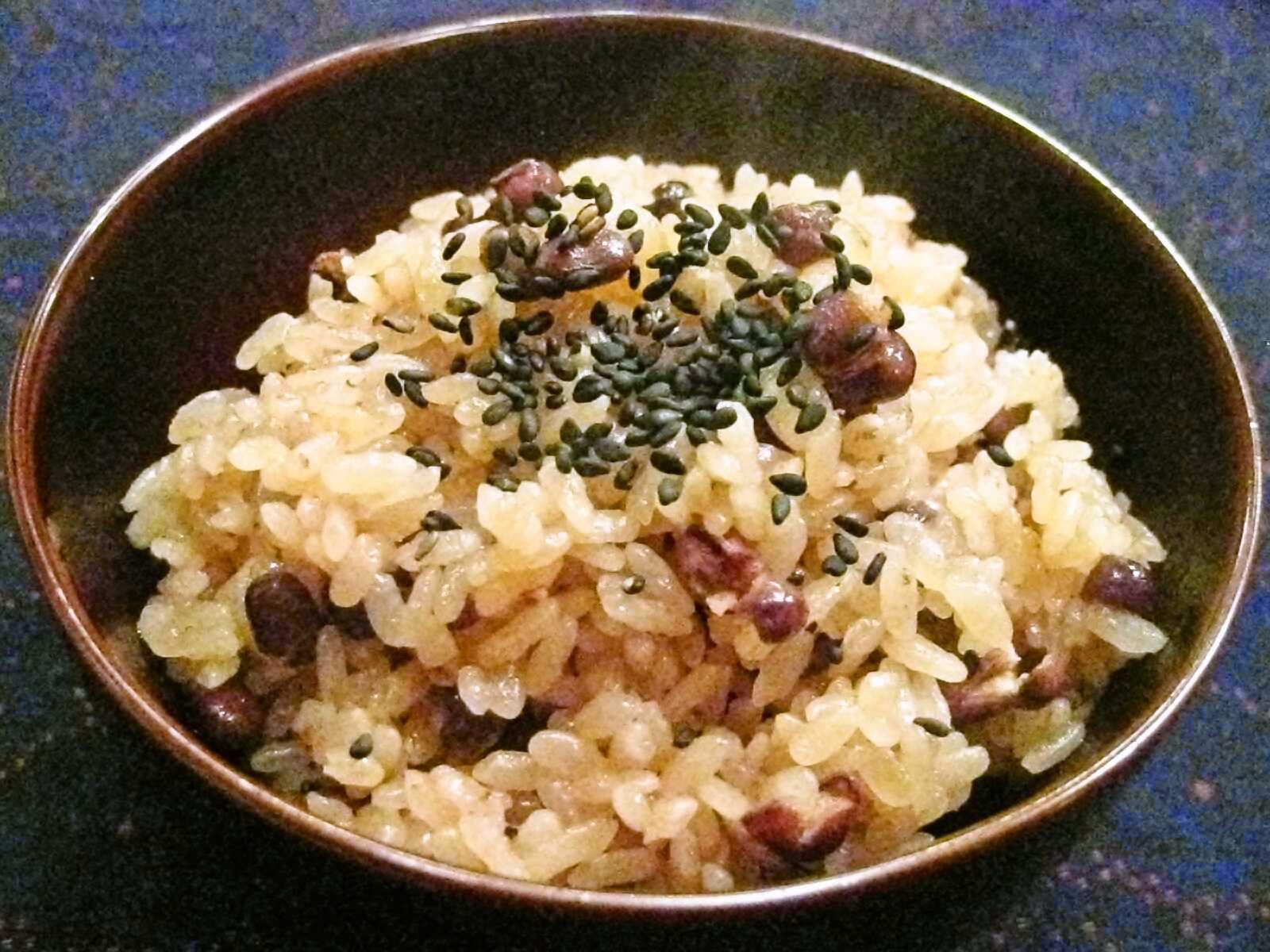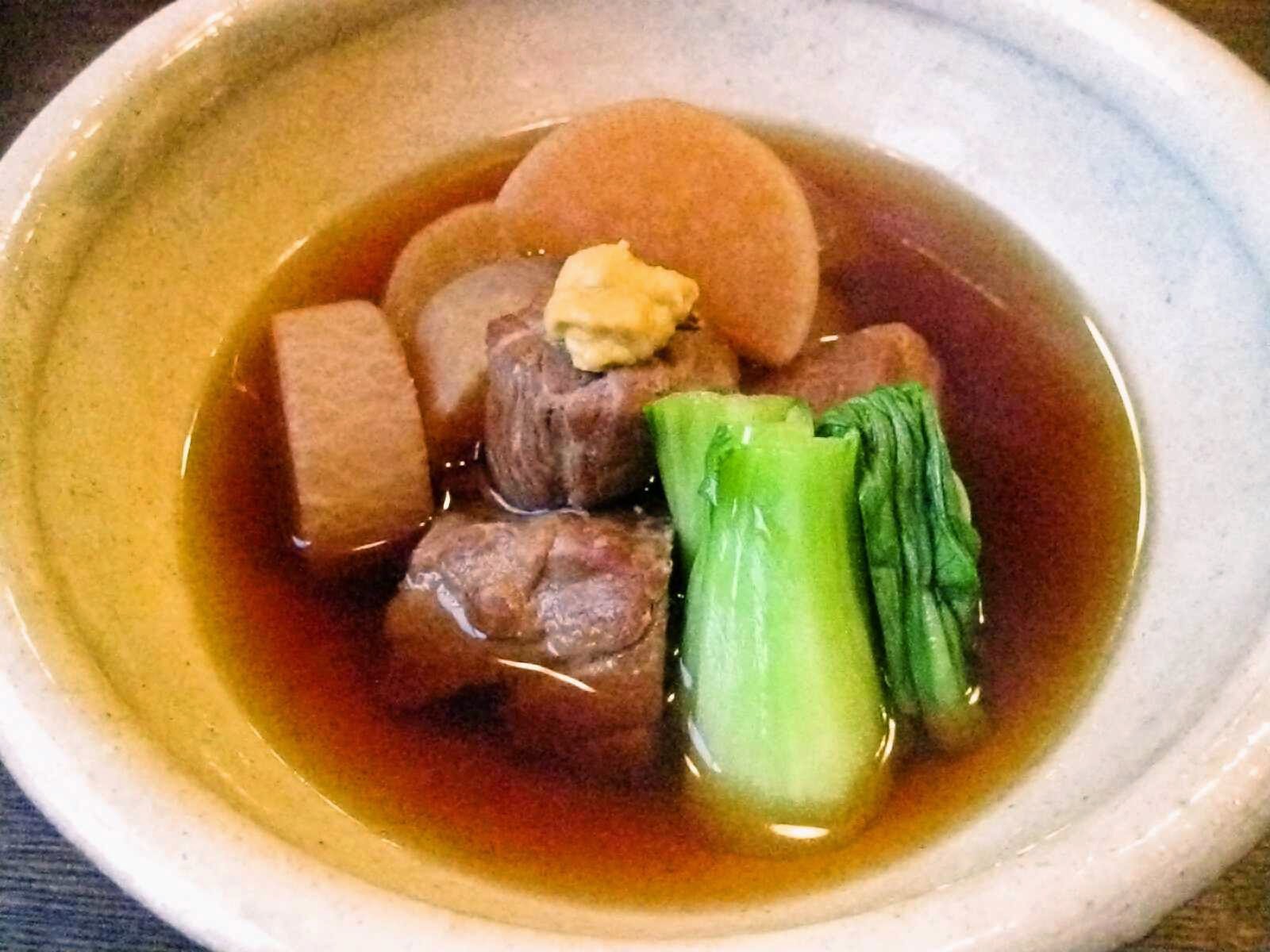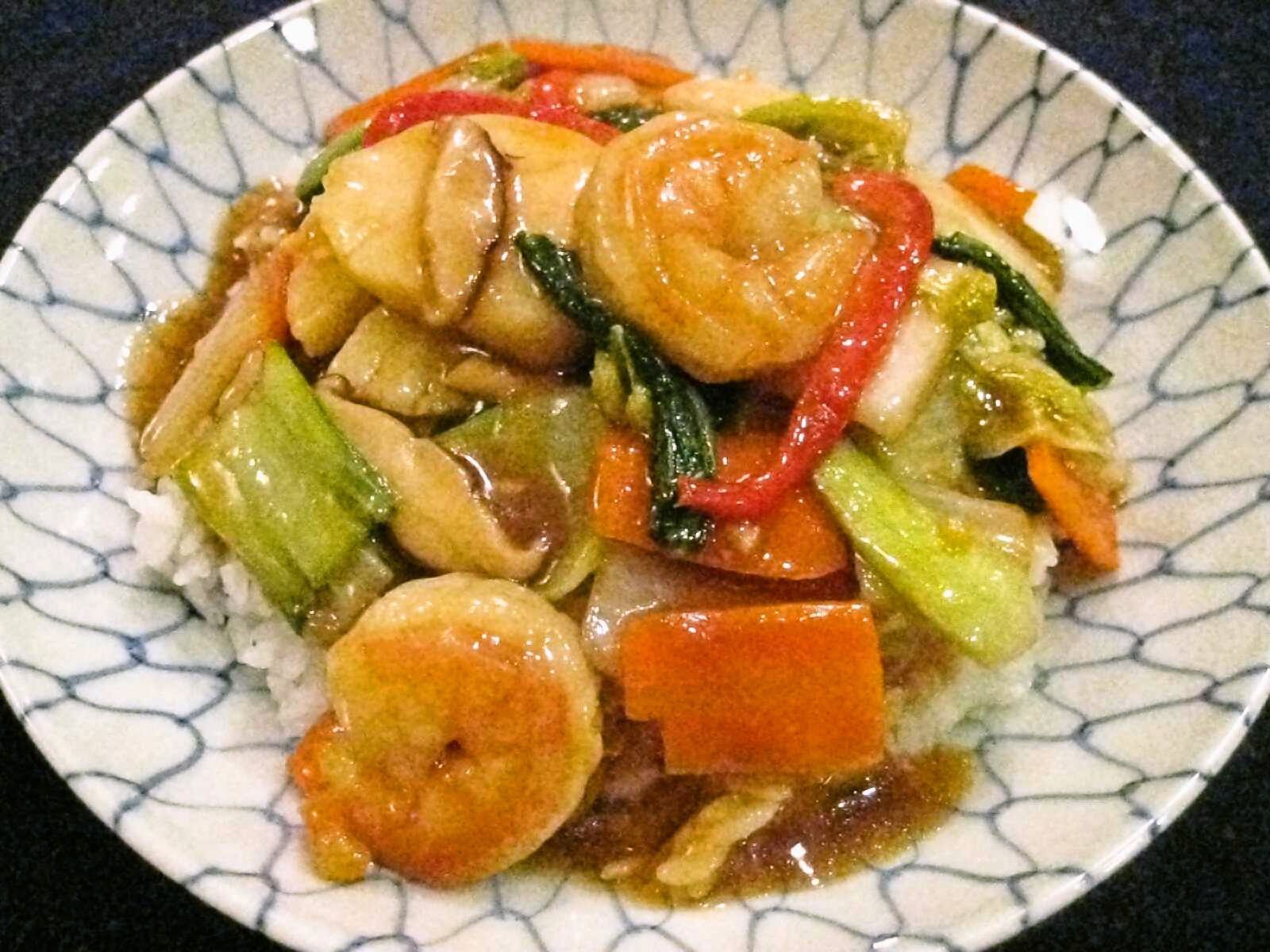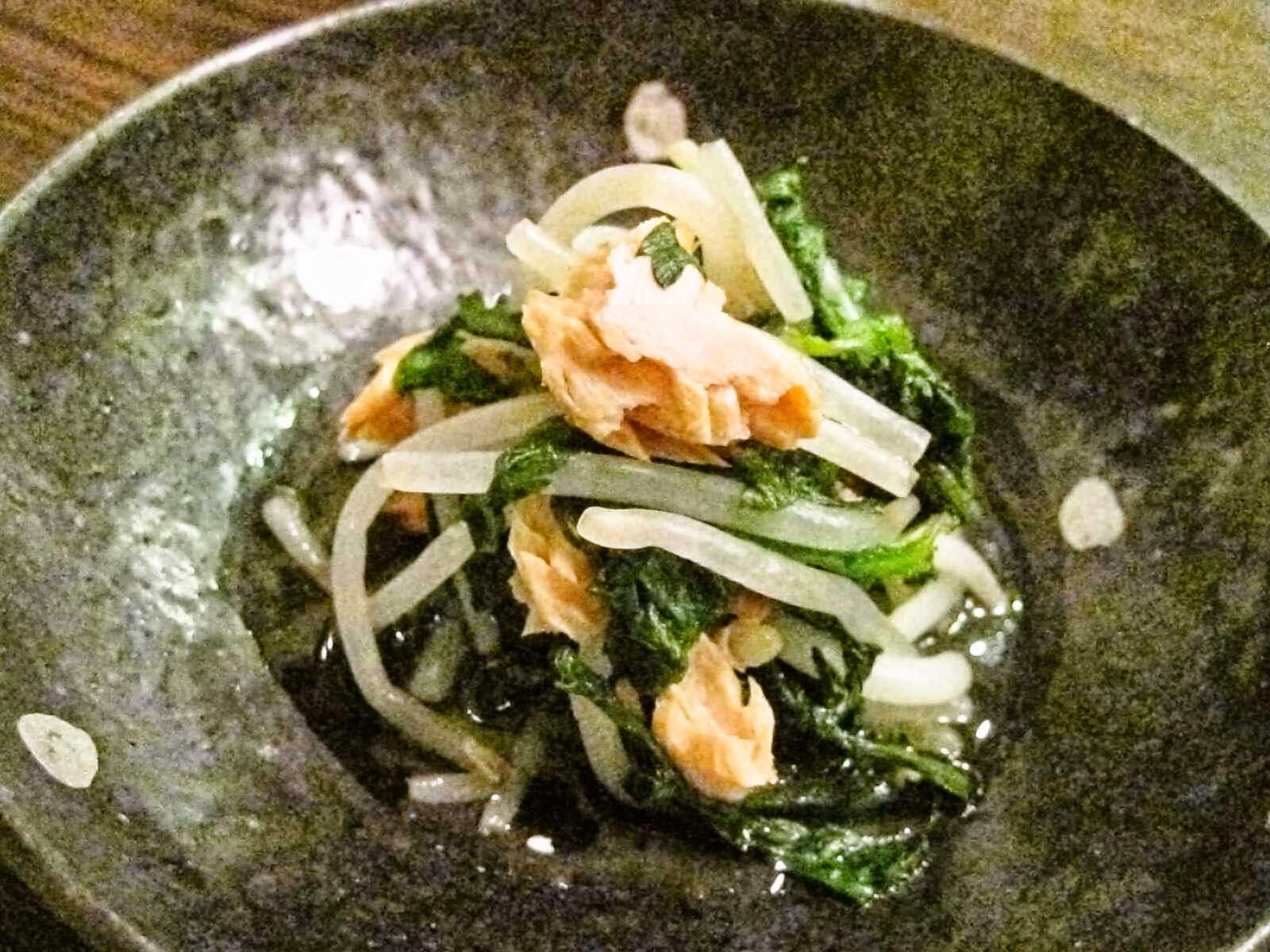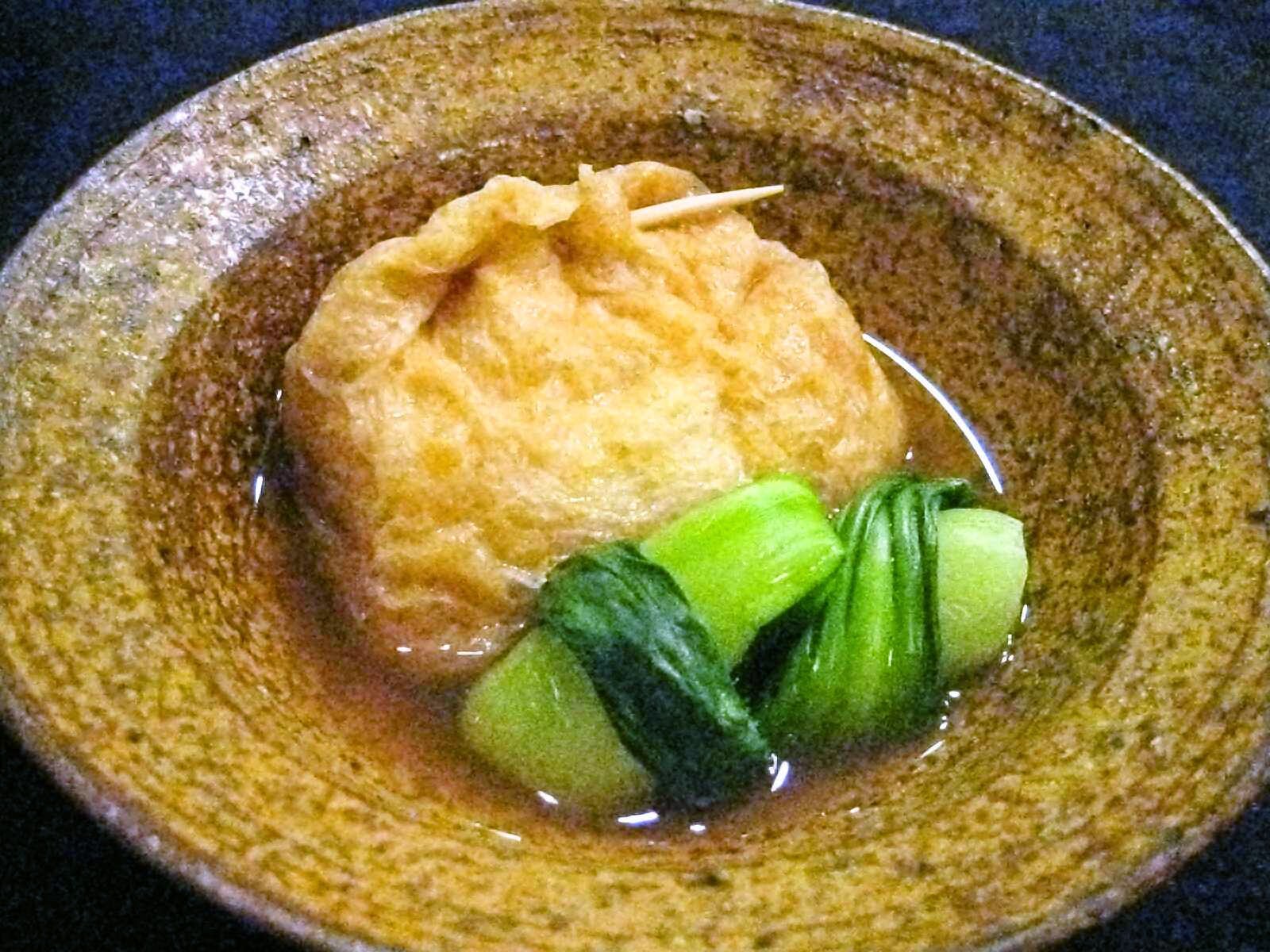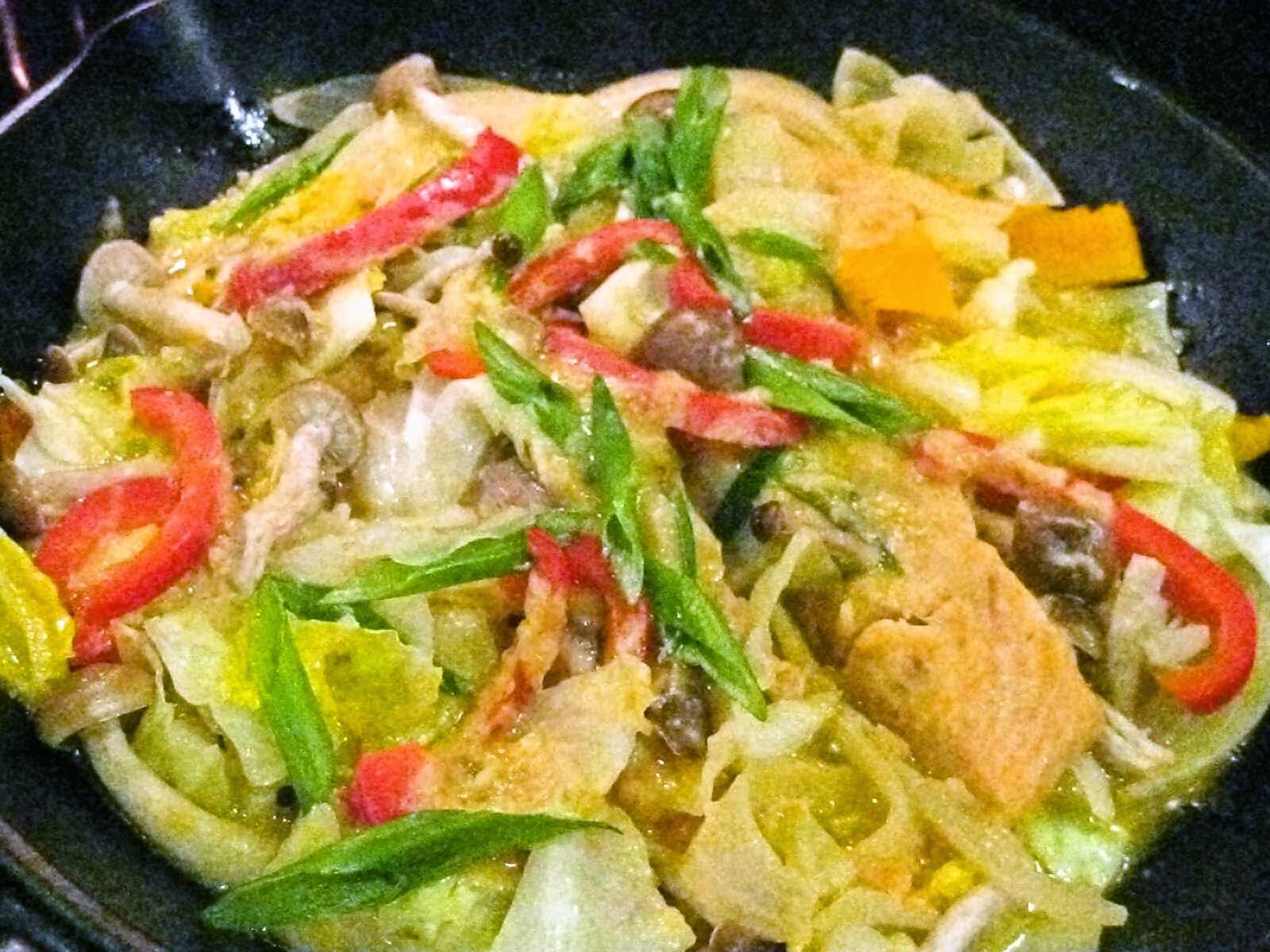All recipes are for 2 servings unless noted. Oil is canola oil and salt is kosher salt.
2012-12-31
2012-12-30
Gindara no yuanyaki / grilled yuan-marinated black cod
Black cod with a sweet and pleasant citrusy taste from yuan marinade (soy sauce, mirin and sake with yuzu citrus). A good alternative to grilled saikyozuke black cod marinated in sweet Saikyo miso.
2012-12-29
Surenkon / subasu / lotus root marinated in sweetened rice vinegar
Labels:
10 min,
2 easy,
bento,
boil,
make ahead,
marinate,
osechi,
picnic,
Recipes - Japanese,
renkon,
vegetables
Hanarenkon / flower-cut lotus root
2012-12-26
Horenso to kani no shogazu-ae / spinach and crab in ginger vinegar dressing
Labels:
1 very easy,
10 min,
blanch,
crab,
Recipes - Japanese,
spinach
2012-12-24
Umeninjin no nimono, shoga-aji / plum-blossom cut carrot simmered in light ginger-flavored broth
A part of takiawase -- assorted vegetables and tofu separately cooked in broth -- for New Year's osechi food. The slightly sweet ginger-flavored broth is one of my favorites for takiawase carrots.
Labels:
1 very easy,
30 min,
bento,
carrots,
make ahead,
osechi,
party,
picnic,
Recipes - Japanese,
simmer
2012-12-23
Buta no kakuni / stewed pork
Among the wide range of variations -- from somewhat firm to heavenly soft, as well as light to heavy -- this kakuni is at the soft, light and non-greasy end. While extra fatty pork belly is the cut of choice for a supremely soft texture, country-style rib, which is more commonly available in the US, is used here. Okara soybean pulp is the secret to removing extra fat and tenderizing pork at the same time in prep-cooking.
Labels:
120+ min (2+ hrs),
2 easy,
daikon,
make ahead,
okara,
pork,
Recipes - Japanese,
stew
2012-12-22
Tatsai to ninjin no okarani / ta cai, carrot and soybean pulp simmered in broth
A humble okara and vegetable dish enriched by sakura ebi dried shrimp and ta cai, a leafy Chinese green.
Labels:
10 min,
2 easy,
bento,
carrots,
microwave,
okara,
Recipes - Japanese,
sakura ebi,
saute,
simmer,
ta cai,
vegetables
2012-12-20
Yasai nukigata / vegetable cutters
Handy tools to cut vegetables into flowers or blossoms for different seasons.
From left: ume plum blossom (late winter/early spring); sakura cherry blossom (spring); kikyo Japanese bell flower (summer); kiku chrysanthemum (fall)
From left: ume plum blossom (late winter/early spring); sakura cherry blossom (spring); kikyo Japanese bell flower (summer); kiku chrysanthemum (fall)
2012-12-19
Nejiriume / plum-blossom cut carrots
For celebrations such as New Year’s, carrots often appear in the shape of a plum blossom. Plum blossoms symbolize early spring, and red blossoms in particular are prized for their celebratory color (red, often in combination with white, is for happy occasions). Some carrots have a reddish color, and those types are usually recommended. The orange of an average carrot still makes a pretty plum blossom. Carrots can be hand-cut or formed with a vegetable cutter.
Labels:
carrots,
Ingredient preparation,
kazarikiri,
osechi,
vegetables
2012-12-18
Kyabetsu to satsumaage no itameni / saute-simmered cabbage and deep-fried fishcakes
The “green” taste of cabbage’s outer leaves turns sweet from sauteing and is further softened by cooking with satsumaage in broth, resulting in a juicy, flavorful dish.
Labels:
2 easy,
30 min,
bento,
cabbage,
fishcake,
Recipes - Japanese,
satsumaage,
saute,
simmer,
vegetables
2012-12-17
Yakimochi to satojoyu / grilled rice cakes, with sweetened soy sauce dip
This is the standard way to eat mochi rice cakes, mainly as a snack, at my parents’ and relatives’ homes.
2012-12-15
Chukadon / Chinese-style saute with sauce over steamed rice
Another standard Japanese Chinese dish. Assorted ingredients are sauteed and flavored in Chinese style -- often meaning a combination of ginger, garlic, chicken stock, and oyster sauce. Here is one example with prawns and scallops.
When served with 150 g steamed rice:
428 calories per serving (1/2 of recipe); 17.1 g protein; 3.0 g fat; 79.0 g carbohydrate; 75.9 g net carbs; 1077 mg sodium (with 50% reduced-sodium soy sauce; 1419 mg with regular soy sauce); 53 mg cholesterol; 3.1 g fiber
When served with 150 g steamed rice:
428 calories per serving (1/2 of recipe); 17.1 g protein; 3.0 g fat; 79.0 g carbohydrate; 75.9 g net carbs; 1077 mg sodium (with 50% reduced-sodium soy sauce; 1419 mg with regular soy sauce); 53 mg cholesterol; 3.1 g fiber
Labels:
3 moderate,
30 min,
carrots,
chingensai,
hakusai,
prawns,
Recipes - Japanese,
red pepper,
rice,
saute,
scallops,
seafood,
shiitake,
shrimp,
stir-fry
2012-12-12
Shungiku, moyashi, shiozake no ohitashi / garland chrysanthemum, bean sprouts and grilled salted salmon marinated in light broth
A great combination! Tangy chrysanthemum, crispy bean sprouts and flavorful grilled salted salmon are infused with dashi, resulting in a delightful small dish.
Labels:
2 easy,
30 min,
blanch,
fish,
grill,
marinate,
moyashi,
Recipes - Japanese,
salmon,
seafood,
shiozake,
shungiku,
vegetables
2012-12-11
Daikon to usuage no nimono / daikon radish and thin deep-fried tofu simmered in broth
Labels:
2 easy,
60 min,
daikon,
make ahead,
Recipes - Japanese,
simmer,
usuage,
vegetables
2012-12-09
Kaki no remon marine / lemon-marinated persimmon
Labels:
1 very easy,
lemon,
make ahead,
no cook,
persimmon,
Recipes - Japanese,
Recipes - Western
2012-12-08
Nagaimo no ebi-iri kinchuakuni / Chinese yam with prawns in thin deep-fried tofu packets, simmered in broth
The soft texture and taste of nagaimo, enhanced with prawns and a fall harvest of gingko nuts and mushrooms.
Labels:
3 moderate,
30 min,
gingko nuts,
make ahead,
moderate,
nagaimo,
prawns,
Recipes - Japanese,
seafood,
shiitake,
shrimp,
simmer,
vegetables
2012-12-06
Tomyo to chikuwa no nibitashi / pea shoots and chikuwa fishcake simmered in light broth
A very quick, warm side dish. The stems of tomyo pea shoots stay crisp even when cooked and make this little dish stand tall. Their texture contrasts well with soft fishcake, which adds a mellow salty taste as you bite in.
Labels:
1 very easy,
10 min,
chikuwa,
fishcake,
Recipes - Japanese,
tomyo,
vegetables
2012-12-05
Ginnan gohan / gingko nut rice
Nutty, starchy little gingko nuts are another reminder of fall. Lightly salted to bring out the soft sweetness of mochigome rice.
Labels:
2 easy,
60 min,
bento,
boil,
gingko nuts,
picnic,
Recipes - Japanese,
rice,
steam
2012-12-04
Breakfast, December 3, 2012
We had lunch with Tom's sister and niece at Shanghai Garden in Seattle yesterday. My favorite dish at the restaurant is pea vine (shoot) saute. It is a very common dish, and Shanghai Garden’s pea vine saute tastes as good as those I used to have in Taiwan. Pea vine saute is not a fancy “wow” dish, but it certainly hit the spot and inspired me to make a decent breakfast the following day with ingredients we already have on hand and something just purchased in Seattle.
Ginnan gingko nut prep
Gingko nut shells can easily be cracked open with a tool, ranging from a hammer to a heavy knife handle or bottle opener. Something slightly heavy usually works better. Kitchen scissors and pliers could smash shells, and require some practice for effective use.
Opening shell
Hold a gingko nut with one of the side ridges straight up, and quickly hit the ridge with a hammer, heavy bottle opener or a tool of your choice.
Opening shell
Hold a gingko nut with one of the side ridges straight up, and quickly hit the ridge with a hammer, heavy bottle opener or a tool of your choice.
2012-12-03
Sake no chanchanyaki / salmon and vegetable saute with miso sauce
A regional dish from Hokkaido that includes salmon, cabbage, onions and other vegetables. Sweetened miso sauce sends off an appetizing aroma as you cook – take the frying pan to the table or cook on a tabletop griddle and enjoy the dish as it cooks.
Labels:
2 easy,
30 min,
cabbage,
carrots,
fish,
green onions,
hakusai,
kabocha,
onions,
Recipes - Japanese,
red pepper,
salmon,
saute,
seafood,
shimeji,
steam,
vegetables
2012-12-01
Ginnan gingko nuts
Seeds of Gingko biloba
Subscribe to:
Posts (Atom)
